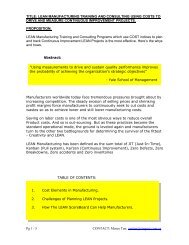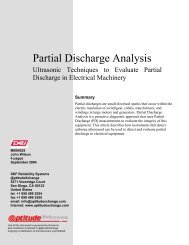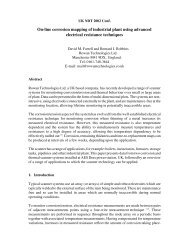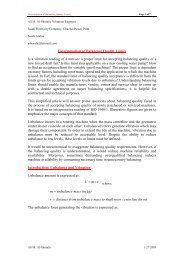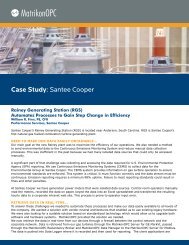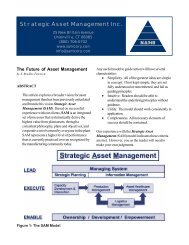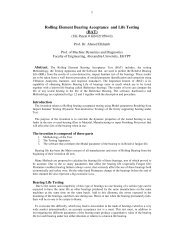A Re-Examination of Failure Analysis and Root Cause Determination
A Re-Examination of Failure Analysis and Root Cause Determination
A Re-Examination of Failure Analysis and Root Cause Determination
- No tags were found...
You also want an ePaper? Increase the reach of your titles
YUMPU automatically turns print PDFs into web optimized ePapers that Google loves.
94. Visually examine the sample. Examine the sample with unaided eye, h<strong>and</strong> lens<strong>and</strong>/or low magnification field microscopes. Note the condition <strong>of</strong> the accessible surfacedocumenting all sorts <strong>of</strong> anomalies, searching for cracks, corrosion damage, thepresence <strong>of</strong> foreign material, erosion or wear damage, or evidence <strong>of</strong> impact or otherdistress. Also consider the condition <strong>of</strong> protective coatings. Manufacturing defects areimportant.If pipe failure is involved, it is important to carefully measure wall thicknesses both at thefailure site <strong>and</strong> some distance away from it at four locations 90 degrees apart aroundthe pipe circumference, starting a the failure site. At the same time note the presence <strong>of</strong>any corrosion <strong>and</strong> map its general distribution.5. Identify defects Non-Destructively. Search for material imperfections withradiography, magnetic particle, ultrasonic, liquid/dye penetrant, eddy current, leak,<strong>and</strong>/or acoustic emissions non-destructive testing procedures. Some photographicexamples <strong>of</strong> these techniques are provided below.At Left: Magnetic Particle Testing done by inducing a magneticfield in a ferro-magnetic material <strong>and</strong> dusting the surface withiron particles. Above Center: Radiography. Above Right:Fluorescent Liquid Dye Penetrant viewed in black light.6. Conduct appropriate chemical analyses. Chemical analysis should be conductedon the original material to determine if the material was <strong>of</strong> proper type <strong>and</strong> grade,whether it met appropriate st<strong>and</strong>ards, <strong>and</strong> whether deviation from the specificationscontributed to the fracture, wear, breaks corrosion <strong>and</strong> failure. Wet chemical analysis,Atomic Absorption, X-ray Photoelectron, Auger Electron <strong>and</strong> Secondary Ion MassSpectroscopies are all potentially suitable methods <strong>of</strong> chemical analysis, depending onthe particular need <strong>of</strong> the situation. The techniques differ in important ways. Other parts<strong>of</strong> the failure “system” may also require analysis, including corrosion products, coatings<strong>and</strong> liquids.



